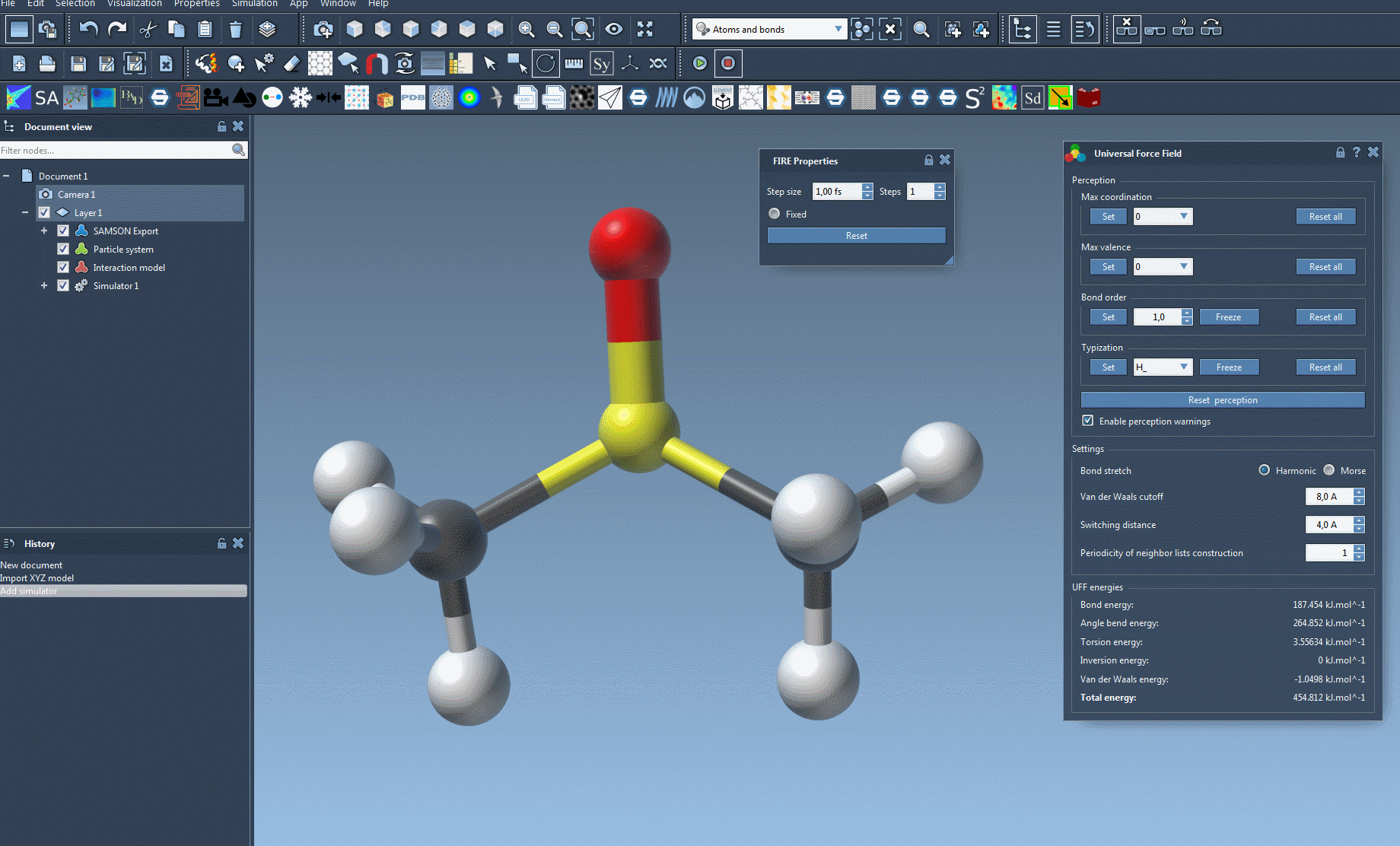If you’ve worked with molecular simulations using the Universal Force Field (UFF), you’ve probably faced this common struggle: finding the right parameters to reflect the behavior of your specific system. Accurate simulation results often require tweaking below the surface—beyond simply running the default model. In SAMSON, there’s a rich set of options for customizing UFF simulations, especially around bond interaction, van der Waals tweaks, and neighbor list tuning. These tools are easy to miss but can make a noticeable difference. Here’s what you need to know to make the most of them.
1. Switch Between Harmonic and Morse Bond Interactions
By default, UFF in SAMSON uses a harmonic potential for bond stretching, good for small displacements. But what if your system involves bonds that may stretch more, like during conformational transitions or optimization from poor starting structures? Switching to a Morse interaction can give a more physically realistic response to bond length variations, especially in loosely-packed or reactive organometallic systems.
You can easily switch interaction type in the UFF parameters window by choosing the Morse radio button instead of Harmonic. The change is applied immediately and typically improves bonding behavior in flexible or strained molecules.
2. Adjust the Cutoff and Switching Distance for van der Waals (vdW) Interactions
If you’re exploring molecular packing, interfaces, or materials where nonbonded interactions dominate, proper vdW settings are essential. SAMSON’s UFF model lets you fine-tune:
- Cutoff distance: Defines the maximum distance at which vdW interactions are considered. Larger values may improve accuracy but slow down simulation.
- Switching distance: Sets how early vdW interactions start to taper off to zero.
These settings help maintain physically meaningful transitions without energy jumps. They’re especially useful for modeling systems like soft matter, molecular crystals, or large biomolecular assemblies.
3. Optimize the Frequency of Neighbor List Updates
vdW interactions in UFF rely on neighbor lists—data structures that determine which atoms interact. By default, SAMSON recomputes them every time step, which is accurate but computationally expensive, especially for large systems.
You can reduce overhead by adjusting the periodicity of neighbor list construction. For more static systems or energy minimizations, updating neighbor lists every few steps is enough. For dynamic simulations where atoms frequently move in and out of interaction range, frequent updates are still necessary. But for pre-equilibrated molecules or solid-state calculations, less frequent updates strike a better balance.
Why These Settings Matter
Each molecular system is unique. Whether you’re building new molecules, dealing with unusual atom types, or modeling flexible topologies, refining UFF parameters improves the realism of your results without compromising performance.
These tuning methods are built directly into the UFF parameter window in SAMSON, alongside real-time energy readings and interactive atomic manipulation features. You’ll find that small changes can lead to more stable simulations or better convergence.

To learn more, read the full documentation on the Universal Force Field in SAMSON: https://documentation.samson-connect.net/tutorials/uff/uff/
SAMSON and all SAMSON Extensions are free for non-commercial use. You can download it at https://www.samson-connect.net.





